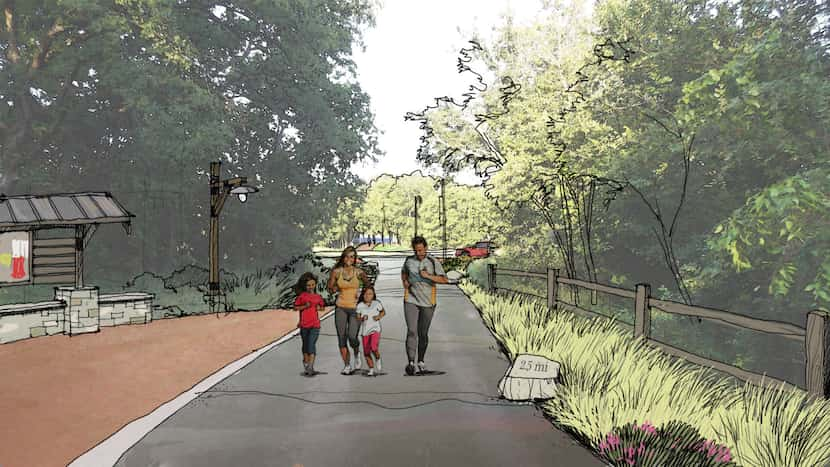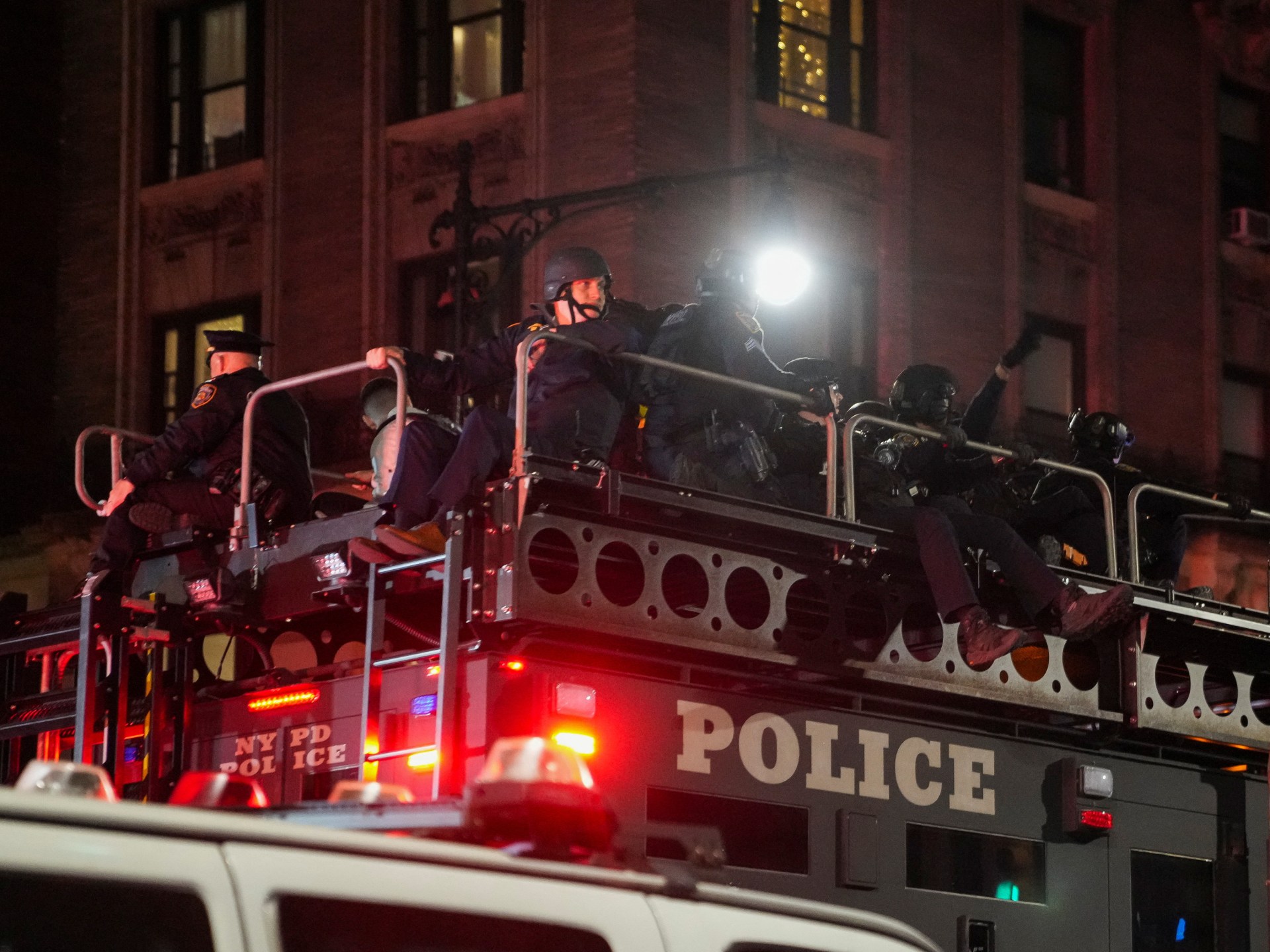California
Man accused of pretending to be a priest to steal money across US arrested in California

Police have arrested a man who they say posed as a priest to commit serial thefts across the country, from Southern California to Texas and New York.
Malin Rostas, a 45-year-old New York resident with an outstanding felony burglary warrant in Pennsylvania, was arrested on April 10 by Riverside County sheriffs deputies after investigators say Rostas had tried to steal from a church in the Moreno Valley, about 60 miles southeast of Los Angeles.
Rostas was arrested on the outstanding warrant and charged on Tuesday with intent to defraud and stealing stolen property in connection with the Moreno Valley incident, according to court records obtained by USA TODAY on Wednesday.
Rostas has pleaded not guilty. His attorney, Mike Flory, declined to comment on his client’s behalf on Wednesday.
Authorities say that Rostas is behind a series of thefts at churches across the country and posed as a visiting priest to gain access to private areas.
Rostas’ ties to New York, Texas
In October, a person calling himself “Father Martin” and identifying himself as a visiting priest visited six parishes in the Dallas area and was able to steal several hundred dollars from a parish in Houston, Diocese of Dallas spokeswoman Katy Kiser told the Catholic News Agency.
Rostas is accused of taking $500 from a priest’s wallet at the Houston church, according to the New York Times. “He claimed he was a visiting priest from Chicago and that he had been staying in the rectory and left his keys in one of the rooms,” a Houston police spokesperson told the Times.
Rostas is also accused of stealing $6,000 worth of jewelry from a woman at the Holy Name Retreat Center in Memorial Villages, Texas, according to KHOU-TV, and $900 from a person at American Martyrs Church in New York.

California
A look at beavers’ important role in California’s wildfire resistance

SACRAMENTO — Nature’s firefighters might not be what you think.
Beavers. They’ve had a bad reputation. Many call them pests, but they’re far from it. They play such an important role in our ecosystem that their work can even curtail wildfires. Beavers are a keystone species, which means their existence benefits many types of plants and animals.
The California Department of Fish and Wildlife (DFW) is recognizing the role beavers play, implementing a beaver restoration program just last year to aid in drought and wildfire resistance.
“Beaver wetlands are uniquely resistant to the effects of drought and then subsequently to the effects of wildfire,” said Emily Fairfax, who is an assistant professor of geography.
For generations, beavers have been classified as a nuisance. Hundreds of permits are sought after each year by landowners to allow them to kill beavers.
Their knack for engineering doesn’t always agree with human engineering. We like to build roads and houses. They like to flood everything and chew down wood.
“While that can be annoying, it’s that flooding and tree chewing that gives you those benefits like drought and fire resistance,” Fairfax said.
“As we build more and more in California, and in other states, we actually are eliminating wetlands and the beavers try to put them back in,” said wildlife rescuer Michele Dodge.
Without beavers, we could face total degradation of our riverscapes, causing more wildfires. In fact, research is showing their work is helping to prevent wildfires altogether, and that’s why the DFW is turning to beavers as a helpful tool.
“I’ve been studying this the last ten years or so using satellite data and field visits to go out and find these places where beavers have been engineering and see whether or not they burn during wildfire,” Fairfax said. “Pretty much across the board, they’re not burning.”
Beavers create patches of fire refugia, places that either don’t burn at all or burn at a low intensity that’s actually helpful for a variety of plants and animals. The patches are fireproof in even our most intense fires like the Beckwourth and Dixie fires.
“You’re going to be seeing forests that have completely burned the pine trees from roots to tips. The soil is ash at this point and it’s silent cut to, and then you turn the corner and you’ll get to the beaver wetland and it’s completely different,” Fairfax said.
Even in Rancho Cordova, the beavers are helping the environment thrive. Their dams create a safe place for geese to nest and lay their eggs.
“It also creates a safe zone, so if there is a fire animals have a place to retreat,” Dodge said.
In the beaver wetlands, you’ll find lush green landscapes full of life. Beavers like to spread the water around, essentially creating a safe haven from a wildfire. Now with the DFW’s restoration program, beavers have a place to go.
“I’m really excited they’ve done that,” Dodge said. “In the past, if somebody trapped beavers they were killed that was the only solution. Now all the sudden, fish and wildlife, we are creating places we want them released.”
The best part is we don’t have to pay these guys. They just do it for free because that’s what they’re naturally inclined to do. They’re nature’s tool against wildfires.
California
California climbers buried in avalanche at 12,000 feet carried to safety after daring 11-hour rescue

A pair of thrill-seeking climbers were buried in a massive avalanche on a California mountain over the weekend — and it took 11 hours to get them both down to safety, authorities said.
The two adventure seekers were trying to summit Mount Shasta on Saturday when they found themselves in the path of a wave of snow, which sent one of them plummeting 1,000 feet down the side of the mountain — aptly known as Avalanche Gulch, the Siskiyou County Sheriff’s Office said on Facebook.
The sheriff’s office received a 911 call from one of the injured climbers shortly before 12:30 p.m., saying he was hurt and stranded at 12,200 feet, while his buddy lay buried further down the slope.
That’s when the rescue operation hit a snag.
“Strong winds and poor visibility inhibited the helicopter’s ability to safely land near the climbers, so the SCSO Search and Rescue Team mobilized, along with US [Forest Service] Climbing Rangers and a group of professional mountain guide volunteers to begin an extraction operation on foot,” the office said.
A break in the weather allowed the chopper to eventually managed to land just above the tree line — about 6,000 feet below the injured climbers. Rescuers climbed into the night on foot and were able to carry the two men down the mountain and onto the chopper around midnight.
Both men, described as expert mountaineers who sought to snowboard down from the summit, suffered non-life-threatening injuries and were recovering at an area hospital.
One climber suffered a knee injury and the other, who was hurled down the mountain by the avalanche, suffered a broken femur and a “deep crampon puncture wound,” officials said.
The sheriff’s office said the heart-pounding rescue should serve as a cautionary tale about the dangers and unpredictable conditions on the 13,000-foot peak.
“It is worth noting that the two climbers caught in the April 27 avalanche were highly skilled mountaineers with extensive experience on Mount Shasta,” the department said.
“Their ordeal and the 11-hour rescue process that followed are reminders that no amount of experience makes one immune to the hazards encountered on Mount Shasta, and that ever-changing mountain conditions can turn a rapid-extraction operations into a time and resource-intensive process.”
Police did not release the names of the two injured climbers.
California
A daring rescue to save an injured hiker in the California wilderness

Lemoore, CA — “It was December 5th, not a cloud in the sky,” recalls Kevin Depaolo, an adventurist who’s visited 49 out of 50 states in a van that he customized himself. “It was sort of the scenario that you’d expect something to go wrong, unfortunately.”
That scenario was a rock hounding trip high in the California wilderness between the Sierra Nevada and the Inyo Mountains. “It’s desolate. I was there for five days and I didn’t see a single person.” Fortunately, Depaolo wasn’t alone. He and a friend were digging for interesting rocks that lay beneath the surface near large boulders that have been sitting for thousands of years untouched. “We were digging and I sat back to rest and all of a sudden my friend yells ‘Kevin look out!’ and before I can even look up, this giant boulder just nails my entire body.”
I kept yelling, ‘you have to get it off! It’s killing me!
Depaolo was trapped. The boulder pushed him onto his back, crushing his pelvis and threatening to roll further down the hill. Depaolo’s friend quickly takes his pick axe, lodging it under the boulder to keep it from rolling further and injuring Depaolo even more. “I kept yelling, ‘you have to get it off! Its killing me!” Depaolo was able to free his left leg, revealing one of his major injuries, a severed artery that the boulder was applying pressure to keeping him from bleeding out.
“My friend then called for help, but my right leg remained trapped and that’s where we spent the next seven hours.” There’s only one road in and out of the area and where Depaolo was trapped, it took him and his friend two hours to hike there. The Inyo County Search and Rescue team that was dispatched to find Depaolo spent six hours on the phone with his friend to pin point their location. Depaolo recalls seeing a helicopter spot them and circling a few times, only to fly off. It was several hours later until help arrived.
“It was dark at that point, about 8pm, when I finally saw the headlamps coming over the ridge. The guys immediately started getting to work.” The Inyo County Search and Rescue team devised an unique pulley system to lift the 10,000lb boulder off Depaolo’s leg. Drilling two bolts into the boulder and a rope to an anchor drilled into a massive boulder down the hill, the Search and Rescue team was able to lift the boulder with the help of a high lift jack, a special tool used to free large off-road vehicles. Once Depaolo was free, the immense pain started to hit. “At that point we needed to get to the hospital. But we were in such a remote area, there’s no way they could carry me down the hill. We needed external help.”
The California Highway Patrol was originally tasked with airlifting Depaolo out, but once the sun went down, there was nothing they could do as their helicopters aren’t fitted for night rescues. Depaolo faced the possibility of spending the night on the mountain, where temperatures fall below freezing. Knowing that he may not make it through the night, Inyo County Search and Rescue made a call to the nearby Naval Air Station in Lemoore, where their elite Search and Rescue team is equipped for night rescues in their helicopter.
“The ground crew was able to send us an exact lat and long. There was nowhere safe to land. The only safe place was miles away.” HM2 Matthew Rector was the medical tech on the mission who repelled down to package up and lift Depaolo off the mountainside. From there it was a 45 minute flight to Community Regional Medical Center in Fresno, CA. It was there Depaolo learned the extent of his injuries. A severed femoral artery, a fractured pelvis in two places and dead tissue in his leg from the impact of the boulder which led to many surgeries and a skin graft.
Fast forward three months and Depaolo is recovering well. He’s able to walk and take short trips, including back to NAS Lemoore to meet his rescuers for the first time since seeing them in the Inyo Mountains. “Seeing those guys and interacting with them, they’re extremely cool guys. It was a life changing experience. I think about those guys almost every day of my life.” What’s next for Depaolo? “Its inspired me in a way that I want to give back and help people in the same way they were able to help me.”
Watch the show “9-1-1” at 8 p.m. ET/PT Thursdays on ABC.
-

 Education1 week ago
Education1 week agoVideo: Dozens of Yale Students Arrested as Campus Protests Spread
-

 World1 week ago
World1 week agoEU sanctions extremist Israeli settlers over violence in the West Bank
-

 Politics1 week ago
Politics1 week agoDemocrats hold major 2024 advantage as House Republicans face further chaos, division
-

 Politics1 week ago
Politics1 week agoFetterman hammers 'a–hole' anti-Israel protesters, slams own party for response to Iranian attack: 'Crazy'
-

 World1 week ago
World1 week agoPeriod poverty still a problem within the EU despite tax breaks
-

 Politics1 week ago
Politics1 week agoA battle over 100 words: Judge tentatively siding with California AG over students' gender identification
-

 Movie Reviews1 week ago
Movie Reviews1 week agoShort Film Review: Wooden Toilet (2023) by Zuni Rinpoche
-

 News1 week ago
News1 week agoUniversal Studios Tram Crashes, 15 Injured, 1 Critical


















